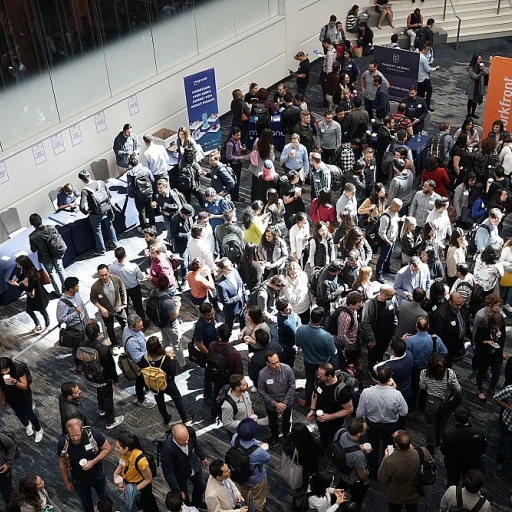Understanding Employee Needs
Grasping the Core Needs of Your Team
Boosting employee happiness and loyalty starts with a deep understanding of what your team truly needs. It's more than just providing a paycheck or a comfortable chair; it’s about recognizing their professional aspirations, personal commitments, and unique working styles. The key lies in engaging in open communication and actively listening to your employees.
Begin by regularly soliciting feedback through surveys or informal check-ins. You'll gain invaluable insights into areas like job satisfaction, work-life balance, and career development goals. This proactive approach can help uncover underlying issues that may affect employee engagement and retention.
Moreover, each team member brings individual values and motivations to the table. Recognizing these differences and responding accordingly can significantly enhance motivation and commitment among your workforce. It's important to remember that employee needs are not one-size-fits-all; customizing your strategy can make a substantial difference.
To delve deeper into how to maintain a happy and productive team, consider
exploring effective strategies and insights that can help tailor your approach to employee satisfaction and retention.
The subsequent steps will further assist in creating a work environment where employees flourish both personally and professionally. By focusing on understanding your employees' needs, you lay a robust foundation for fostering loyalty and decreasing turnover.
Creating a Positive Work Environment
Fostering a Supportive and Inclusive Culture
To boost employee happiness and loyalty within any organization, it is essential to create a positive work environment where everyone feels valued and included. This not only enhances an individual’s motivation but also significantly contributes to overall well-being and productivity.
One of the key factors in cultivating such an atmosphere is effective communication. Open and transparent communications where employees feel heard and acknowledged can bridge gaps and foster a sense of belonging. When employees are encouraged to share ideas and concerns, without fear of judgment, it promotes trust and respect among team members and leadership alike.
Moreover, embracing diversity and inclusion within the workplace can play a monumental role in employee satisfaction. By celebrating individual differences and advocating for equal opportunities, businesses can harness a multitude of perspectives and skills, creating a richer and more innovative work environment overall.
An often overlooked yet powerful practice is expressing appreciation and recognizing achievements. Implementing regular, meaningful acknowledgment for a job well done can go a long way in making employees feel valued, consequently boosting morale and engagement. Such recognition can be as simple as a heartfelt 'thank you,' or a more formal reward structure, and can significantly enhance the emotional connectivity between employees and the organization's mission.
Leaders set the tone for the workplace culture. Their commitment to maintaining not only a productive but also a supportive atmosphere is crucial. Encouraging professional relationships and a team-oriented mind-set can foster collaboration, which translates to higher loyalty and reduced turnover.
In essence, constructing and nurturing a supportive and inclusive workplace environment is indispensable for employee retention success. It complements efforts outlined in other aspects such as understanding employee needs and providing growth opportunities. When employees feel part of a healthier work culture, they are more likely to remain committed to their roles, thereby naturally enhancing retention prospects.
The Role of Leadership in Retention
The Impact of Strong Leadership on Employee Loyalty
Effective leadership stands as a cornerstone in fostering employee loyalty and ensuring retention. Businesses often overlook the powerful influence that leaders exert over the workplace atmosphere and team spirit. Employees tend to stay loyal to leaders who genuinely motivate and inspire them, turning the office into a place where they feel valued and understood. This deep sense of appreciation can be cultivated when leaders actively listen to and address the unique needs of their team members, as discussed in understanding employee needs.
Leaders who promote open communication and encourage collaboration craft a culture of trust and mutual respect. Such an environment not only boosts morale but also enables employees to spell out their career aspirations and concerns without fear of repercussion. For instance, when employees are part of a positive work culture, they are more likely to feel secure and supported in their roles, which is crucial for long-term commitment.
Further, addressing leadership development becomes essential in improving employee satisfaction. Leaders who invest in their growth, acquire new skills, and remain approachable are better positioned to guide their teams effectively. This not only elevates the leader's capacity to offer growth opportunities, as highlighted in training and development opportunities, but also fortifies the bond within the team.
Moreover, leaders who recognize and reward hard work set a powerful precedent that encourages others to strive for excellence, ultimately contributing to the organization's overall success. The alignment of leadership strategies with effective retention techniques ensures that employees feel genuinely connected to the company's mission and vision.
Organizations must prioritize honing leadership qualities to ensure that their teams are led by empathetic and visionary individuals. To delve deeper into maintaining a happy and engaged remote workforce, explore the
importance of leadership in retention for additional insights.
Training and Development Opportunities
Enhancing Skills for Future Success
Employee retention is intricately linked to the opportunities an organization provides for personal growth and career development. It is no secret that employees invest their loyalty in companies that invest in them. This section explores ways organizations can create a culture that values continuous learning and skills development.
First and foremost, understanding what employees need to excel plays a crucial role in retention. Just as it's important to address immediate concerns, it's equally vital to focus on long-term professional development. Offering mentorship programs, workshops, and access to online learning platforms can significantly improve employees' satisfaction and commitment to the company.
Another important aspect of training and development is tailoring opportunities to individual career paths. Managers should take the time to have meaningful conversations with team members about their aspirations and how the company can help achieve them. This approach not only motivates employees but also aligns their growth with organizational goals.
Regular feedback and performance reviews are also essential. These provide valuable insights into areas for improvement while showcasing the progress employees are making. Positive reinforcement and constructive feedback can significantly enhance employee morale, leading to a more engaged and productive workforce.
Remember, investing in training and development is not just about retaining talent; it's a strategic move that prepares employees—and the company—for future success.
Competitive Compensation and Benefits
Understanding Compensation Beyond the Paycheck
When it comes to employee retention, offering a competitive salary is undeniably important; yet many companies overlook the full spectrum of compensation and benefits. To truly satisfy and retain employees, organizations must think beyond just the numbers on their paychecks.
A well-rounded compensation package includes a variety of benefits that cater to different aspects of an employee's life. Health insurance is often a top priority, providing peace of mind and security to workers and their families. However, more organizations are now extending this to include dental, vision, and mental health support, reflecting a holistic approach to wellness.
Flexible working arrangements have also emerged as a significant aspect of compensation, particularly as work-life balance becomes an increasing priority for employees. This flexibility, whether through remote work options or adaptable scheduling, acknowledges individual needs and contributes to job satisfaction.
Financial wellness programs are growing in popularity as part of compensation strategies. Offering resources such as retirement savings plans, employee stock options, or tuition assistance demonstrates an investment in employees' long-term success. These benefits not only attract talent but also encourage loyalty by aligning with the employees' personal and professional aspirations.
Moreover, don't underestimate the value of recognition programs. Non-monetary rewards like additional vacation days or public acknowledgement can boost morale and foster a positive work culture.
In summary, competitive compensation and benefits encompass a broad array of offerings that address the diverse needs of employees. From paychecks to perks, understanding this spectrum is vital in fostering a loyal and satisfied workforce.
Effective Retention Strategies
Implementing Targeted Retention Techniques
Retaining top talent in any organization requires a thoughtful approach, combining elements from understanding employee needs to recognizing the critical role of leadership. It's essential to implement effective retention strategies tailored to your workforce's unique attributes and expectations. Here, we'll explore some impactful techniques that can contribute to long-lasting employee satisfaction and organizational loyalty.
Firstly, regular feedback and communication play a vital role in maintaining employee morale. Consistent check-ins and performance reviews help employees feel valued and acknowledged, creating a sense of belonging. This aligns well with the establishment of a positive work culture and environment previously discussed, where open dialogue is encouraged.
Moreover, recognizing and rewarding employees for their contributions can significantly boost retention. Implementing recognition programs, whether through awards, bonuses, or even simple acknowledgments, can reinforce positive behavior and illustrate that the organization values its team members' efforts. This form of appreciation can be a strong motivator and can weave seamlessly into creating a supportive work atmosphere.
Lastly, fostering a culture of growth and development, as addressed in our section on training opportunities, is indispensable. Employees who see a clear path for advancing within the company are more likely to remain engaged and committed. Encouraging continuous learning and personal development not only benefits the individual but also enhances the entire organization's capability.
By integrating these targeted retention techniques, organizations can create a thriving workplace where employees feel supported, appreciated, and motivated to remain loyal. This holistic approach ensures each component—from leadership's influence to competitive compensation—works synergistically to retain top talent.






